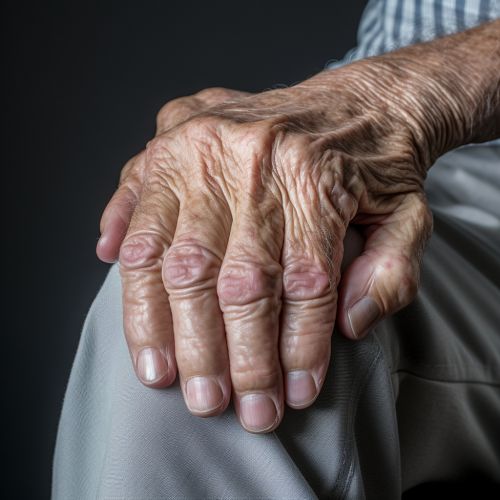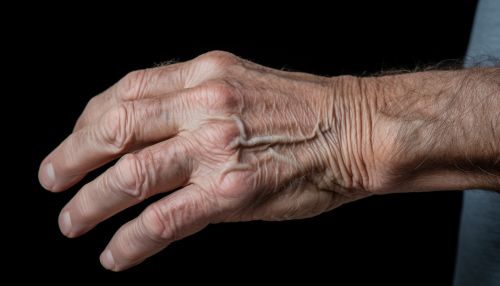Rheumatoid Arthritis
Introduction
Rheumatoid arthritis (RA) is a long-term autoimmune disorder that primarily affects joints. It typically results in warm, swollen, and painful joints. Pain and stiffness often worsen following rest. Most commonly, the wrist and hands are involved, with the same joints typically involved on both sides of the body. The disease may also affect other parts of the body. This may result in a low red blood cell count, inflammation around the lungs, and inflammation around the heart. Fever and low energy may also be present. Often, symptoms come on gradually over weeks to months.
Etiology
While the cause of rheumatoid arthritis is not clear, it is believed to involve a combination of genetic and environmental factors. The underlying mechanism involves the body's immune system attacking the joints. This results in inflammation and thickening of the joint capsule. It also affects the underlying bone and cartilage. The diagnosis is made mostly on the basis of a person's signs and symptoms. X-rays and laboratory testing may support a diagnosis or exclude other diseases with similar symptoms. Other diseases that may present similarly include lupus and osteoarthritis.


Pathophysiology
The pathophysiology of rheumatoid arthritis is complex and involves many cell types, including lymphocytes, macrophages, and fibroblasts, which contribute to inflammation and joint destruction. The disease is characterized by the infiltration of these inflammatory cells into the joint, where they produce a variety of cytokines, including tumor necrosis factor (TNF), interleukin-1 (IL-1), and interleukin-6 (IL-6), which drive the inflammatory process. These cytokines also stimulate the production of RANKL, a molecule that triggers the destruction of bone by activating osteoclasts.
Clinical Manifestations
The primary clinical manifestation of rheumatoid arthritis is joint inflammation, which is characterized by joint pain, swelling, and loss of function. The joints most commonly affected are the small joints of the hands and feet, although larger joints such as the knees and shoulders can also be involved. The joint symptoms are usually symmetrical, meaning that if a joint is affected on one side of the body, the same joint on the other side is also affected. In addition to joint symptoms, patients with rheumatoid arthritis can also have systemic symptoms, such as fatigue, weight loss, and low-grade fever.
Diagnosis
The diagnosis of rheumatoid arthritis is based on the presence of characteristic clinical symptoms, the results of laboratory tests, and the findings on imaging studies. The American College of Rheumatology (ACR) and the European League Against Rheumatism (EULAR) have developed classification criteria for rheumatoid arthritis, which include the presence of joint symptoms, the presence of rheumatoid factor (RF) or anti-citrullinated protein antibodies (ACPA) in the blood, and evidence of joint damage on imaging studies.
Treatment
The goal of treatment is to reduce joint inflammation and pain, prevent joint damage, and maximize joint function and quality of life. Treatment strategies include pharmacological and non-pharmacological interventions. Pharmacological treatments include nonsteroidal anti-inflammatory drugs (NSAIDs), corticosteroids, disease-modifying antirheumatic drugs (DMARDs), and biological agents. Non-pharmacological treatments include physical therapy, occupational therapy, and surgical interventions such as joint replacement.
Epidemiology
Rheumatoid arthritis affects about 24.5 million people as of 2015. This is between 0.5 and 1% of adults in the developed world with 5 to 50 per 100,000 people newly developing the condition each year. Onset is most frequent during middle age and women are affected 2.5 times as frequently as men. It results in about 20,000 deaths per year.
